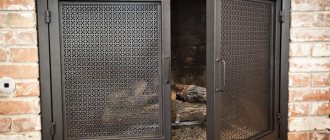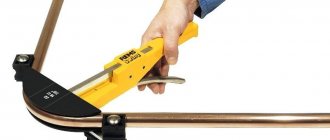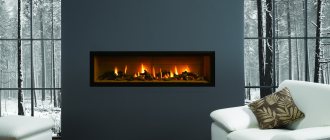What are vapor drip heaters
Steam drip heaters are a novelty in the heating market. Outwardly, they look like ordinary electric convectors, but differ from them in their filling. They work from the electrical network, heating a kind of coolant - the water pumped inside. Manufacturers declare their high economy. But you cannot blindly trust such statements - the laws of physics cannot be surpassed.
Steam-droplet heaters were developed by the Volgograd enterprise NPO Volgograd Energy Saving Technologies. It introduced on the market models with a capacity of 0.5 to 1.5 kW. The company's specialists claim that these heaters are able to save electricity by almost 50%. But in reality, the savings are about 10-15% due to the use of precise electronic thermostats.
Consider the device of a vapor-droplet heater. Its main element is a heating element, which heats up distilled water in a closed pipe. The temperature regime is monitored by an electronic thermostat. The preset temperature is set on it, after which the room starts to warm up. The principle of operation of a vapor-drop heater is as follows:

The maximum temperature of the heating unit is up to +120 degrees. Let's remind that in traditional convectors the temperature of the heating element is much higher.
- The heating element heats the water, as a result of which it begins to evaporate.
- Steam rises up the pipe and condenses in its cold part.
- The heat energy released during condensation is sent to the room.
- The condensed water is sent down, after which the cycle is repeated.
The further principle of operation of vapor-drop heating is similar to the principle of operation of conventional convectors.
Since the pipe with the coolant is hidden in a housing with upper and lower slotted holes, convection is created - heat is carried around the room.
Making steam-drop heaters with your own hands
Steam-droplet heaters are devices that use ordinary water as a heat carrier. In appearance, these devices are very similar to electric convectors. They operate on a standard power supply and do not require additional equipment. The popularity of the device is ensured by good indicators of efficiency and durability.
General information
Such heating equipment is quite expensive, so many poor families prefer to make them on their own. To do this, you need to own not only some knowledge, but also the skills of such work. Only in this case will the drip-steam heater turn out to be of high quality and will work effectively.


Steam drip heaters are very unpretentious to use, they will help create a cozy atmosphere in your home
Device and principle of operation
Such devices for heating living quarters are produced in different capacities (from 0.5 to 1.5 kW). Moreover, they are very simple and have a structure similar to each other. Any type of vapor-drop radiator can save the owner at least 10% of electricity. This indicator is achieved through the use of special devices with high accuracy and quality.
Heater device:
- sealed heat exchanger, which is insulated inside the apparatus;
- a heating element powered by electricity and installed at the bottom of the heating device.
- block with control system;
- electronic thermostat.


The heater is very simple and efficient to use
Despite the simplicity of the device, this apparatus works very efficiently. It heats up quickly and gives off most of the heat to the room in which it is installed. Factory and self-made vapor-droplet batteries are capable of heating an apartment, house or office. In the room where such a device is installed, you can quickly raise the temperature to + 24 ° C.
Operating principle:
- As soon as the device is connected to the electrical network, the heating element begins to heat up.
- It gradually heats up and heats the water to a boil.
- Because of this, the coolant turns into steam.
- It rises and heats the body of the device.
- Then it condenses and quickly gives off its heat to the room.
- The resulting liquid droplets flow down, and the process is repeated anew.
Advantages and disadvantages
Do-it-yourself vapor-drop heaters, like any other device, have their own advantages and disadvantages. They must be taken into account before starting work in order to protect yourself from possible negative consequences.
In the video, more about vapor-droplet batteries:
The positive aspects of the device include the following:
- Simplicity of design. The heater does not contain complex assemblies, which greatly simplifies and reduces the cost of the repair process in the event of any breakdown.
- Cheapness. Due to their small size and the absence of expensive parts, steam-drop boilers are relatively cheap. Even people with limited financial resources can afford such a heater.
- Durability. These devices rarely break down and, with proper care, can last for a fairly long period (up to 30 years).
- Environmental friendliness. The vapor-droplet heater is powered by the mains, so it does not emit any harmful substances into the atmosphere or the environment. In addition, it does not dry out the air and does not cause an unpleasant odor.
- Security. The device operates at minimum pressure, which excludes the possibility of depressurization or explosion. In addition, it is absolutely safe for humans.
- Resistance to corrosion. The device will never rust or lose its attractive appearance, as it is made of corrosion-resistant materials.
- Frost resistance. The vapor-drop heater tolerates even the lowest temperatures well. The limited amount of water used prevents the possibility of rupture when the coolant freezes completely.


Steam drip heaters, with a careful attitude, will delight you with special durability
In addition to a large number of advantages, the device also has disadvantages that are associated with its design and method of operation.
Among them it is worth noting the following:
- A device with a similar device can operate at a minimum of electricity, but a vapor-drop heater uses it in much larger volumes.
- An unsafe combination of electricity and water.
- The efficiency of the device is significantly lower than the indicators declared by the manufacturers.
Application area
All types of vapor-droplet batteries are widely used in various fields. Thanks to them, a large number of residential and industrial premises are heated.
Apparatuses are used in the following cases:
- for heating kindergartens and educational institutions;
- to maintain comfortable conditions during construction or repair work;
- for heating hotel rooms, country houses, loggias and balconies;
- for defrosting communications (water, sewage in basements, wells);
- to maintain heat in places of temporary residence of people (sanatoriums, recreation centers, workshops, workshops, offices and others).


With the help of a vapor-droplet heater, you can provide a comfortable temperature in any room
Self assembly
To equip steam-drop heating with your own hands, you need to have some knowledge and skills in similar work. A self-made heater should be as similar as possible to the one that is produced in the factory.
Of steel pipe
Before you start making a vapor-drop heater, you need to find a ready-made scheme and carefully study it. In addition, it is important to ensure maximum safety, as the slightest inaccuracy can lead to electric shock.
For self-manufacture of a vapor-drop battery, you will need the following materials and tools:
- a piece of pipe made of metal that is resistant to corrosion (aluminum, copper and others);
- a small diameter tube made of a similar material and a lid for it;
- valve for water;
- a piece of stainless steel wire;
- welding machine.
All materials used can be easily found in any hardware store in the locality. They are quite expensive, but a small number of them will be needed for the device.
The work of assembling the heater is simple, but requires skill in welding and electricity. If you are not sure that you can cope with such a task, then it is better to seek help from a specialist or refuse a homemade device.
Electric heater video:
The assembly of the heater is carried out in a few simple steps:
- A pre-prepared piece of metal pipe is neatly welded from one side. In this case, the seam must be tight and as even as possible.
- A cover is attached to the opposite edge.
- A small-diameter tube is mounted to it, which will serve to fill the apparatus with a coolant.
- A water valve is connected to it. Thanks to him, you can not only control the supply of liquid to the device, but also monitor the accumulating vapors. The valve must be made of an alloy compatible with the material of the pipe on which it is installed.
- The electrical part of the device is assembled according to the selected scheme. It must have a stainless steel wick.
From an old cast iron battery
The simplest home-made heater is a device made on the basis of an old cast-iron battery. To do this, you need to somehow integrate a heating element operating from the mains into it and fill it with water. In this case, the device must be made as tight and safe for humans as possible.
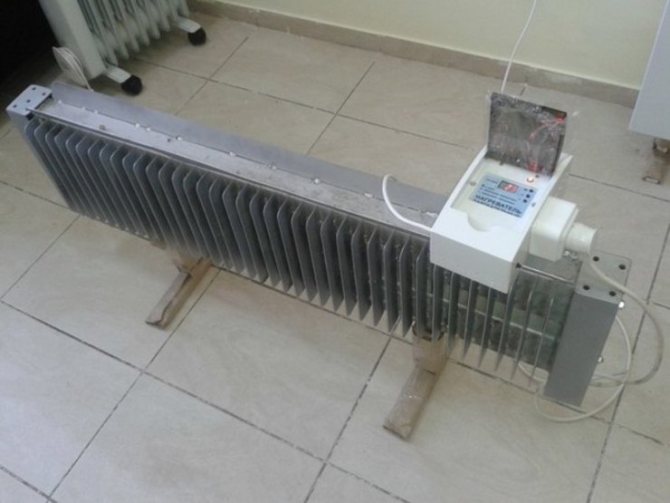

A steam-drop heater made of a cast-iron battery heats up for a long time, but at the same time remains hot for a very long time after being turned off
Such a device differs from others in its long heating, which can take more than a dozen minutes. At the same time, the cast-iron device perfectly keeps heat and retains it for a long time even after disconnecting from the network.
You need to pour enough water into a homemade heater so that it completely covers the installed heating element. In this case, it is important to observe the measure: a battery filled to the brim will burst when the liquid freezes.
To make a homemade airborne droplet device from an ordinary battery, it is necessary to provide a thermoregulation system. Thanks to it, it will be possible to maintain the desired heating level and monitor possible deviations. The best option would be to buy the simplest and cheapest mechanical room thermostat. It will work effectively and monitor temperature readings.
How to start assembling an electric heater with your own hands
The most effective form for such a radiator is a pipe:
- provides maximum heat transfer;
- promotes the most free movement of the coolant from the heating area to the heat supply area.
Factory models look like a familiar radiator consisting of several such pipes.At home, it is also rational to make a heater of a similar design.
Before proceeding with your own assembly of the device, carefully read the finished diagram taken as a basis and the instructions for it. Follow the directions exactly as it is about electricity
Pay extra attention to safety. For a vapor drip heater you will need:
- pipe made of corrosion-resistant metal - copper, aluminum;
- a small diameter tube made of the same material;
- cover for her;
- water valve;
- corrosion resistant metal wire;
- welding machine.
Attention! The device of a vapor-drop heater is simple, but it will require you to use welding and knowledge of an electrician. If you are not confident in your abilities, it is safer not to tackle the construction of a homemade heater
Device device


Factory vapor-drop heaters are somewhat similar to tubular radiators, which are very close in size. The tubular structure is used for the reason that it is shaped in such a way that heat transfer occurs as efficiently as possible. It is easier for the coolant to move along the pipe from the hot zone to the heat transfer area. The device has a shape that resembles a conventional radiator made of pipes. This indicates a high probability of making such a device with your own hands. The system has an electric water heater, which consists of a body based on a heat-insulating material. This part is provided with a heat-conducting top cover, which contains U-shaped heating elements with conductive leads.
Assembling a vapor-droplet heater in stages
The whole process will take time, care, scrupulousness and diligence:


Externally, a vapor-droplet heater resembles a conventional radiator
- Take the prepared piece of pipe. Brew it hermetically on one side.
- At the opposite end, close the section with a lid. A narrow diameter tube should be attached to it. Through it, the heater will be filled with liquid.
- Attach a valve to the narrow tube. With its help, during operation, you will control the gases accumulating in the device. The valve material must be compatible with the pipe material.
- Assemble the electrical base of the heater according to the diagram. It assumes the presence of a wick, most often made of stainless wire. However, aluminum is not suitable for these purposes. The elements are woven together and welded. You can make a mesh of foam or felt.
Attention! Low-power heating elements can be bought at the store. Choose a model with a temperature controller .. Another option for a vapor-droplet heater involves its manufacture on the basis of a ready-made hot water radiator, in which there are threaded holes
In order for such a device to be fixed in a vertical position, it must be attached to a frame with flat supports or legs (it can be welded from a steel corner). The thread in such a radiator, most likely, will not match the thread of the purchased heating element. An adapter adapter is required for alignment. A seal should be used in all connections. Careful assembly and accurate operation will help you save up to 70% on the purchase of a factory model
Another option for a vapor-droplet heater involves its manufacture on the basis of a ready-made water heating radiator, in which there are threaded holes. In order for such a device to be fixed in a vertical position, it must be attached to a frame with flat supports or legs (it can be welded from a steel corner). The thread in such a radiator, most likely, will not match the thread of the purchased heating element. An adapter adapter is required for alignment. A seal should be used in all connections.Careful assembly and accurate operation will help you save up to 70% on the purchase of a factory model.
Making a wick
When choosing a wick, it is necessary to take into account that the material in its base must be compatible with the working fluid. When a do-it-yourself vapor-drop heater is made, you should provide it with a wick. The most commonly used wick is a braided wire mesh. This element can be woven from monel, copper or stainless wire. For the manufacture of the wick, it is not recommended to use an aluminum mesh, as it is rather difficult to weave.
Experts recommend using a stainless steel mesh for manufacturing. The connection of the elements with each other should be carried out by the method of diffusion welding. This will form a sufficiently strong solid wick that connects to the walls of the metal pipe body. The technician should carry out diffusion welding at a temperature of 1150 degrees in a vacuum oven. It is not always possible in everyday life to create such conditions, which is why, if you decide to make a vapor-drop heater with your own hands, then the implementation of several elements should be entrusted to specialists. The wick can be made of felt or foam. You can find metal and ceramic felts on sale.
How effective are vapor drip heaters
Electric convectors have an energy consumption that is equal to the heat output, this leads to certain design restrictions. So 1 kW is able to provide about 0.1 m2 of heat output, and the temperature of which the heating element will have will be about 350 degrees. When high-temperature air passes through a hot radiator, the atmosphere in the room becomes too dry, and this can cause some discomfort. Expanding the space in this situation will not help, since the temperature will also have to be increased.
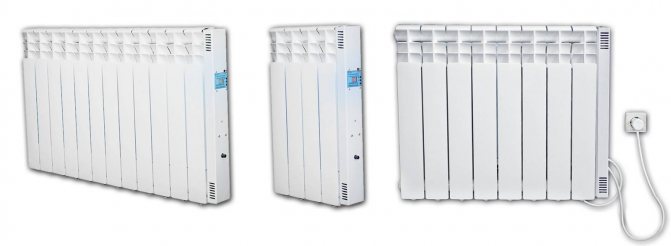

As for the vapor-droplet pressure, the following indicators are inherent in it:
- Thermal power in relation to electric power is 3 times higher;
- The efficiency level is 98%;
- The temperature of the heat carrier can vary from 70 to 120 degrees;
- The humidity in the room remains acceptable.
For this reason, such a heater can be installed in any room, even in a school or hospital. In addition, the installation can be used as a backup option, but the price of such a unit is much higher than that of an electric heater.
Waste oil potbelly stove
Furnaces that run on waste engine or transmission oil are widely popular. The advantages of such furnaces are reliability, efficiency in terms of consumption and obscurity of used oil. The drip furnace is considered the most economical due to the peculiarities of the fuel supply, but it is difficult to make it on your own.
Dropper stove
The dropper stove works due to the fact that the ignited waste in the first tank emits flammable gases, which are mixed with air in the second tank and re-ignited, reaching very high temperatures (about 800 ° C).
It is best to purchase a ready-made structure. But if you want to try your hand at such a thing, then photo 2 shows a drawing according to which the assembly is carried out. Instead of a 180x180x6 pipe, a gas cylinder is often used (before cutting the cylinder, you should fill it with water or slowly drill a hole in the bottom and pour out the contents).
To automate the process and create a drip system, you need to filter the waste by running it through a hose, at the end of which a full filtration car filter is installed.
You also need to select a fuel pump that will supply the right amount of fuel.You can use a piece of dropper hose with a regulator, put it on the bottom fitting and control the fuel supply.
A drip oven can also be used to heat water if a heat exchanger with a removable container is arranged in the upper part. Such a dropper stove can also be used to heat a room if you connect a water heating system to it at home and equip it with a pump to circulate water through the system.
It is worth mentioning such a heater as a diesel fuel stove. It is often used in homes where it is impossible to implement another type of heating. According to its characteristics, a diesel fuel stove is similar to a gas boiler. It has high efficiency and can be converted for gas consumption. True, it requires timely maintenance and the availability of high quality fuel. A diesel fuel stove is more expensive and harder to build, so the above designs are good alternatives. published by econet.ru
How to do it yourself
The scheme of operation of the device is simple, so it is quite possible to make vapor-drop heaters with your own hands. To do this, you need to stock up on the following materials:
- Copper tube.
- Valve.
- Copper or stainless steel wire.
- Cover.
- Welding.
The body needs a pipe made of aluminum or copper, you can also use stainless steel. The filling of a metal pipe is carried out through a lid with a pipe of a smaller diameter attached to it, one side of which must be closed from the ingress of air. For the filling pipe, a valve of a material compatible with the main one must be installed. The next step is to weave the stainless steel mesh to make the wick.


Before making a homemade heating device, you need to study the assembly information in detail. It is better to use ready-made instructions and not ignore the points described.
If you have the skills to work with electrical engineering, you can create various types of heaters with your own hands: portable, candle, oil.
It will not be superfluous to listen to the advice of professionals. Better yet, purchase a ready-made vapor-drop heater and enjoy the warmth and humidified air, without danger to life.
Principle of operation
Typically a device is produced in a typical size with a conventional home battery, but the efficiency is much higher relative to the amount of heat generated.
This type of device can be briefly described as a heat accumulator. The principle of its operation is pulse, however, this does not affect the temperature level that has been set, and it must be maintained in the room. The device goes into shutdown mode after some time intervals, but half of the heat accumulated during operation during the shutdown period continues to be released into the environment. Some models of foreign manufacturers can heat up to a temperature threshold of 350 ° C.
A vapor-droplet heater is an improved device that has a heat exchange system at the heart of its work. But this particular type of heater has significant differences from other similar equipment. The general principle of operation of the device can be divided into several processes:
- water is heated by the action of electricity;
- a process is characteristic in which the coolant changes its state of aggregation to the level of steam and simultaneously releases thermal energy;
- due to the condensation process, the entire volume of the coolant is returned back to the system;
- the sequence of processes has cyclical repetitions.


The operation of a vapor drip heater mainly depends on the heat pipe. Its functions and characteristics can be described as follows:
- This element of the device is a conductor and transfers heat from the zone in which heating occurs (heating zone) to the one that is not yet heated (heating zone).
- It has a high level of thermal conductivity exceeding silver and copper in this parameter.
- It transfers about 90% of the heat energy to the condensation zone thanks to the previous feature.
- Due to the fact that the tube has a capillary effect, used in modern elements, the movement of liquid condensate occurs through a capillary network inside the device.
- The tube cavity contains porous materials such as a wick or loose ceramic.
- Modern structures contain water, ethanol, methanol or ammonia as a heat carrier.
- As for the efficiency of the heating element, it depends on the size and shape of the element, its properties and the value of the heat transfer coefficient.


The vapor-droplet type of heaters is referred to pipeless heating systems. In addition, the owner of such a system is given the opportunity to regulate the operating mode of the device and set the required temperature regime, which can be selected for each individual case. It also allows for cost control and independence from the central heating system and their requirements.
In a closed system with an infinite number of cycles, electrical energy is converted into heat.
If we describe the principle of operation of a vapor-droplet heater in more detail, then it will look like this:
| Cycle start / end | Due to the action of the batteries, the water in the system heats up to the required set temperature. |
| Second phase | The boiled water forms steam, which is completely sealed in the cavity of the heating element. |
| Stage three | Thermal energy is generated and released into the surrounding space. |
| End / start of cycle | During the release of heat during condensation of steam, it begins to flow back into the heating element along the surface from the inside of the device, after which, in a similar cycle, the process of converting again into steam begins. |
It should be borne in mind that the distinctive advantageous feature of the vapor-drop heater system is that, thanks to the tube, it can transfer a much larger amount of thermal energy. In this regard, the small dimensions of the installation of a vapor-droplet heater make it possible to produce a much larger amount of heat for heating a room than similar converter-type devices.


Technical characteristics and varieties of steam condensate heaters
The main criterion when choosing a PCH is the power required to heat a room of a specific area and volume. For household models of vapor-drop heaters, this parameter is in the range from 0.5 to 2.0 kW. Accordingly, in regions with a temperate climate, in the presence of effective external insulation of the building envelope, a 1.5 kW PKN will provide heating for a room with an area of up to 15 square meters.
Variants of the location of the wall-mounted PKN in residential premises
The design of various models of vapor-droplet heaters requires an accurate calculation of the ratio of the power of the needle heating element, the surface area of the unit body, taking into account the finning and the amount of coolant used in the reservoir.
The maximum power of the PKN of 2 kW has been selected for safety reasons. With reference to this value, the volume of the tank, the amount of liquid poured into it and the heat transfer area are calculated. The ratio of these parameters should ensure effective vaporization in the container at a safe vapor pressure (no more than 0.07 MPa), the surface temperature of the body is no more than 115 degrees, and the location of the needle heating element is always below the liquid level - even when the heater is operating in the maximum normal mode.
Steam-droplet heaters are multi-section batteries with an electronic control unit, with a capacity of 1.5, 0.9 and 0.5 kW.
Steam-droplet heaters, as already mentioned above, are divided into household devices and units for industrial use.
Devices for industrial use are more powerful, respectively, and their dimensions are larger. With the release of such units, the aesthetics of performance are pushed into the background, giving way to efficiency, housing strength and security of the control system, as well as the supply cable.
Steam condensate heaters for industrial use
However, even industrial vapor-drop heaters of modern models have a class of external finishing above average, which allows them to be used in everyday life without prejudice to the interior of the room.
Steam condensate heaters of increased power BHeat Air 3000 with a power of 3 kW for industrial use - heating rooms up to 30 square meters.
Modern PKN heaters, both for domestic and industrial purposes, are equipped with a security system (automatic shutdown when the bimetallic plate overturns or overheats) and temperature control - a thermostat operating on the basis of data from a temperature sensor, standard or additionally installed with your own hands in the current area of the room - by reaching the set temperature in this zone, the heater will turn off.
Steam condensate heater with electronic control unit equipped with a liquid crystal display
PKN models by location are subdivided into floor-standing, wall-mounted and universal. The principle of operation of devices of all these structures is the same, heat transfer from the units is produced by both sides of the panel.
Floor-standing units are equipped with support legs to ensure a stable position on a horizontal plane, or a platform with wheels to facilitate movement.
In the event of an unforeseen overturning of the heater, the device for automatic disconnection of the network will operate, and the relatively low temperature of the case cannot cause a fire.
Floor-standing model of a vapor-drip domestic heater with holes in the supports for fastening to the floor with self-tapping screws
Wall-mounted models have holes on one side of the panel for brackets that fix the unit to the wall. The design and size of the brackets ensure that the PCH is located at a distance of 7-10 cm from the supporting base, which reduces the thermal effect of the heater on the wall and does not impede air convection from the rear side of the device. The section of the wall located behind the installed heater must be additionally equipped with a heat shield made of heat-resistant material.
Wall mounted steam condensate heater
The design of the PKN of universal location allows you to install support legs on them or mount it on the wall. The effectiveness of a particular application depends on the specific operating conditions.
PKN models of universal placement - for use on the floor or on the wall
Modern heating devices vapor drip heaters
Steam-droplet electric heater
Electric heaters have always been in demand. The lack of other types of fuel and the availability of electricity in all regions of the country, even in the most remote villages, have made them very popular in the recent past. Today, a lot has changed, because among all types of energy carriers, electric current is the most expensive. This began to scare consumers away from buying electric heaters. They needed more economical options. And they were not slow to wait for themselves, today on the market you can buy an electric heater of a vapor-droplet type.What is it, how does it work, and what are its savings? We will answer these and other questions in this article.
First, let's start with the fact that a vapor-droplet heater is a modern heat-exchange type apparatus, which is very different from all known electric heating devices. The principle of its operation is that there is water in the device system, which is heated with electricity. In this case, the water circuit is completely closed. It turns out a fairly simple but effective heat transfer scheme:
- Water is heated by electric current.
- The liquid is converted into steam.
- The latter condenses and returns back to the system with a liquid filler.
- And the whole process is repeated anew.
In this case, two types of thermal energy are immediately used: from the heated coolant and from the process of steam condensation.
In fact, a vapor-droplet heater is a kind of heat accumulator that concentrates a liquid heat carrier with a sufficiently high temperature in its volume.
Even after a power outage, the coolant generates heat for a long time. This is the main distinguishing feature of this type of heater from all other electrical analogs, which immediately cool down if they are disconnected from the AC mains.
I would like to add that the temperature of the coolant inside the steam-drop electric heater is plus 90-120C. These modern heating units are supplied by manufacturers with high-precision automatic units, with which it is possible to regulate the temperature regime and the operation of the device itself. Automation control is simple, it will not be difficult to figure it out on your own. If there are any problems, then you can overcome them by studying the instructions attached to the accompanying documents.
https://youtube.com/watch?v=6FZ1X1JDONY
general description


A vapor-droplet heater, reviews of which you can read below, is, in fact, a heat accumulator that concentrates a heat transfer fluid with a high temperature. Even if the electricity is turned off, the coolant will generate heat for some time. This is the main distinguishing feature of the described type of heater from other electrical analogs, which cool down after disconnecting from the AC network. The vapor-droplet heater has a coolant inside, the temperature of which can vary from 90 to 120 degrees. These modern devices have high-precision automatic blocks, through which you can adjust the temperature regime and the operation of the apparatus. Automation lends itself to control quite simply, the user will be able to figure it out on his own.
Technical characteristics of vapor-droplet heaters
Equipment for heating a house, like a vapor-drop heater, has its own characteristic features, which can be found in the table.
| Characteristic | Description |
| The essence of the process | Thermal energy is generated through the process of heating water. |
| Temperature limit | The temperature that is created inside the device has a threshold of 120 ° C. |
| Heat generation | It is possible to continue heating the room after turning off the device due to the accumulation of thermal energy. |
| Heating rate | The device heats up in 10 minutes due to the fact that the volume of liquid in the system does not exceed 350 ml. This nuance is also a guarantee of the safety of the device, because in the event of freezing of water and when it expands, such a volume will not be enough for the parts of the device to rupture. In addition, when the heater is turned on, the ice thaws and the operation of the device resumes. |
| Lifetime | About 30 years old.Also, corrosion processes are impossible in the device, which is why it is used for such a long time. |
| Efficiency level | About 100%, in some 98%, but this is also a fairly good value. |
| Defense mechanism | In case of overheating of the device, a special thermal protective mechanism must be triggered and the temperature will be reset due to the equipment with valves, which in such a situation take an open position. |


Features, pros and cons of vapor drip heaters
A drip-steam heater is a fairly simple heating device. It has the following features and benefits:
- Simple design - a vapor-droplet heater does not contain complex assemblies that could fail with subsequent expensive repairs.
- Vapor-droplet batteries are distinguished by an affordable price - their purchase will not hit the consumer's pocket.
- Long service life - devices from NPO "Volgograd Energy Saving Technologies" work up to 30 years and even more (in any case, the manufacturer says so).
- Environmental friendliness - the drip heater does not dry the air, does not burn oxygen and does not emit hazardous substances. Also, the operation of these devices does not cause the formation of unpleasant odors.
- Safety - the vapor-droplet heater, although hermetically sealed, works at minimum pressure. Therefore, explosions are excluded.
- Good corrosion protection - heater components are made of resistant metals and their alloys.
- Frost resistance - the drip-steam heater can easily withstand frosts and does not burst from them, since the amount of water inside is limited.
There are also some downsides:
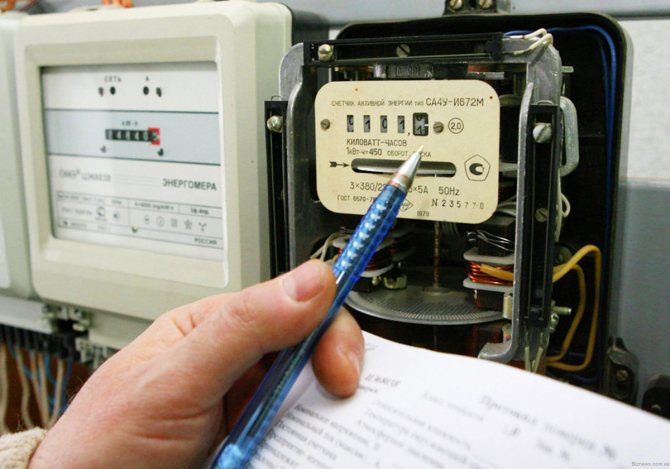

The main disadvantage of consumers and third-party experts is the lack of declared efficiency.
- A vapor-drop heater is not particularly economical. If we take the same convector with an electronic thermostat, then both devices will consume almost the same amount of electricity.
- Combining water and electricity is always unsafe.
- High energy consumption is a disadvantage not only for vapor-drop heaters, but also for any other electric heating devices.
The high efficiency of vapor-droplet heaters is, if not a myth, then a marketing ploy - any heater has an efficiency of 98-99%, like the devices described in the review.
Application
Steam drip heaters are more suitable as an additional heating method. They can be used in ordinary residential buildings as well as in industrial buildings, offices and hospitals. PKN is perfect for institutions that are characterized by inconstant, occasional use: clubs, country houses, hotels, recreation centers, etc. It can also be installed on a loggia.
However, the question arises about its high cost compared to other devices.
So. Opinions about vapor drip heaters are very contradictory. Some call it "a miracle of modern technology", others are inclined to believe that conventional heaters are no worse, but they are much cheaper.
We tried to evaluate the device as impartially as possible, and the choice, as always, is yours.
Device device
The structure of vapor-droplet systems is markedly different from the usual heat exchangers. The main difference is in the heat pipes.
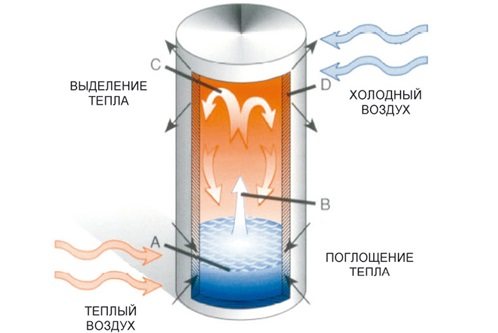

The tube is a device for transferring heat from a compartment with hot water to another compartment with cold water. It is considered the perfect piece for heat transfer.
The device can provide a much higher volume of heat compared to a conventional heating system. And all this is available in a small size. As stated above, steam heaters are identical in size to traditional batteries.
Connection diagram
Features of the installation of the system vary depending on the type of equipment
For steam heating of a closed type, it is important that at the point of entry and exit of steam, the pressure difference is sufficient for liquid to flow out.In this case, the steam collector should be located much lower than the heating devices
This is due to the fact that in systems of this type, steam again enters the boiler by gravity. This means that the pipeline must be installed at a slope.


There are also 2 types of wiring:
one-pipe - steam moves through the 1st pipe;
two-pipe - steam moves through the 1st pipe, and in the 2nd - it is converted into condensate.
Most often, for private houses, it is the two-pipe wiring option that is used. This is due to the fact that it can be used to independently regulate the temperature in the system. While in a one-pipe system, this can be done only if you turn off the heating or reduce its power, which is unacceptable for the cold season.


Installation
Steam heating can be installed by hand, but it is important to do everything right. Even small mistakes during installation can cause the equipment to malfunction in the future.
Before proceeding with the installation process of the structure, several parameters must be taken into account:
- area of the heated room;
- location of radiators and their number;
- remoteness of the steam boiler;
- location of filters, shut-off and control devices and other elements.


The optimal length, diameter and number of pipes should be indicated in the design documentation. Recommendations for the selection of heating elements and batteries are also written there.
It is also important to select steam fans and a circulation pump in such a way that the coolant can operate as efficiently as possible. After the generator, radiators, measuring instruments, fittings and main pipes are ready, it will be possible to proceed with the installation
It is performed in several stages.
Surface preparation for the installation of heating devices. For this, it is necessary to install the wall mounts for the location of the batteries. It is best to install radiators under windows. This will eliminate the appearance of drafts and fogging of the glass, because the air coming from the windows will immediately heat up.


Expansion tank installation. This must be done using clips at the highest point of the heating system, placing the tank between the radiators and the steam generator as close as possible to the boiler. Installation of the pipeline. To do this, it is necessary to bring the pipe from the steam generator to the first heating device, adjusting its size if necessary. Next, you need to connect all the vaults and make a serial connection to the next device
It is important to install pipes with a slope of 3 mm in order to ensure the natural circulation of the coolant.
Installation of the storage tank. It should be located in front of the steam generator. Condensate will accumulate in it, which is necessary for the constant supply of the boiler with water. Short circuit of the line on the heating boiler. A closed loop is created by installing a filter on the boiler. This is necessary to retain dirt and impurities contained in the liquid.
It is important to take into account that the diameter of the branch pipe going from the pump to the boiler must be less than the diameter of the other pipes.
The main work on the installation of the system has been completed. It remains only to connect the necessary devices: a pressure gauge, a relief valve. Then you need to add a drain unit to the system to remove the coolant during seasonal pumping
At the end of the work, it is important to carefully check the entire system for defects and leaks, as well as the strength of the connections. If you find any inaccuracies, you should immediately eliminate them.


Heating by various stoves
Stove heating usually serves to heat small areas or the impossibility of constructing another type of heating. Furnaces operate on solid fuels.
In this type of heating, the heating device is usually the stove itself. When fuel is burned, its structure heats up and gives off heat to the air. Russian stoves, potbelly stoves and so on work according to this principle.
Sometimes stoves are included as a heat source in hot water heating systems. A prominent representative implementing this modification of stove heating is a Dutch stove. A metal tank is built into it, in which the water is heated. The stove of this model gives off heat and the surface of its structure.
Furnaces are operated manually and require the construction of a chimney and fuel storage. In case of poor-quality combustion of fuel, carbon monoxide can be released into the room. The advantage of stove heating is complete energy independence.
(392, 1 today)
We recommend reading:
The principle of operation of heating boilers
Floor standing gas boiler for heating a private house
Proper heating of a private house
Hot water heating devices
Heat accumulator for heating system
Correct laying of a water-heated floor
Prices for vapor drip heaters
| Model | Characteristic | Price, rubles |
| BHeat Air-4 | Heating power level 700 W. The required amount of energy for operation is 280 watts. Dimensions 375x90x580 mm. Weight 5.7 kg. The size of the heated area by the device is 7-21 m3. | 9,500 |
| BHeat Air-6 | Heating power level 1000 W. The required amount of energy for work is 400 watts. Dimensions 530x90x580 mm. Weight 7.7 kg. The size of the heated area by the device is 10-30 m3. | 10,400 |
| BHeat Air-8 | Heating power level 1300 W. The required amount of energy for work is 550 watts. Dimensions 690x90x580 mm. Weight 10.2 kg. The size of the heated area by the device is 13-39 m3. | 11,300 |
| PKN-3-0.5-4 | Heating power level 420 watts. Dimensions 400x600x80 mm. Weight 5.0 kg. The size of the heated area by the device is 17 m3. Four sections. | 12,100.00 |
| BHeat Air-10 | Heating power level 1600 W. The required amount of energy for work is 750 watts. Dimensions 845x90x580 mm. Weight 12.4 kg. The size of the heated area by the device is 16-48 m3. | 12,200 |
| PKN-3-0.6-6 | Heating power level 600 W. Dimensions 550x600x80 mm. Weight 8 kg. The size of the heated area by the device is 20 m3. | 13,200 |
| PKN-3-0.9-8 | Heating power level 850 W. Dimensions 700x600x80 mm. Weight 10 kg. The size of the heated area by the device is 30 m3. Eight sections. | 14,300 |
| PKN-3-1.0-10 | Heating power level 1000 W. Dimensions 600x900x80 mm. Weight 13 kg. The size of the heated area by the device is 35 m3. Ten sections. | 15,400 |
| PKN-3-1,2-12 | Heating power level 1200 W. Dimensions 1000x600x80 mm. Weight 15 kg. The size of the heated area by the device is 40 m3. | 16,500 |
Video review of a vapor-droplet heater
Advantages of the heater
- Firstly, a huge service life, which, according to the manufacturer's calculations, is set within 30 years. This is due to the fact that there is no air inside the closed metal structure, where the heat transfer fluid is located and condenses the vapor. This means that metal corrosion processes do not occur. In addition, this container also cannot explode, because it contains a certain volume of water, which, when heated, does not completely fill the reservoir.
- Secondly, if, in the absence of people in the house and with the heating system turned off, the vapor-droplet electric heater suddenly froze, then this will not break it. It's all about the small amount of water inside it. Usually it freezes, and when the device is turned on, it defrosts and begins to circulate in a predetermined cycle.
- Thirdly, by installing this type of electric heating device in each room, it is possible to regulate and adjust the temperature regime in a particular room at your discretion. This will also save on energy consumption.
- Fourthly, vapor-droplet heaters are used today in a variety of premises. Most often they are used as an additional heating system. In small buildings, as the main type of heating.
- Fifthly, it will not be difficult to install this heating element with your own hands. The place of installation is traditional - under the window opening. Although this is not the only option, everything is, as always, at your discretion.
Advantages of a steam-drop electric heater
Such a device completely safely transfers the freezing of the heat transfer fluid. After the temperature rises to positive values, the water simply thaws. The heater can then be used normally. In addition, the device has the following advantages:
- Freezing safety allows you to use such devices in non-residential premises that you rarely visit during the cold season: a summer cottage, garage, workshop, loggia, etc.
- The tightness of the structure and the absence of oxygen in the middle prevents the heater from rusting from the inside.
- Even the most efficient steam-drop electric heaters have a relatively low power. This, together with the small amount of water used, minimizes the likelihood of spontaneous explosion to a negligible minimum.
- Durability. The heater has an average life of about 30 years.
- Do not dehydrate the air in the room. The same property allows devices to work more efficiently as heat accumulators.


Comparison of vapor heaters (left) and conventional electric heaters (right) - In the case of complete equipment of housing with vapor-drop heaters, you will be able to control the temperature in individual rooms literally manually. For example, turn down the heat on the sunny side or in a room you rarely visit. This will allow you to save energy and adjust the atmosphere in the house to your own preferences.
Attention! Among other things, the vapor-droplet type of heater is used as a second heating line to enhance one of the traditional heating systems.












